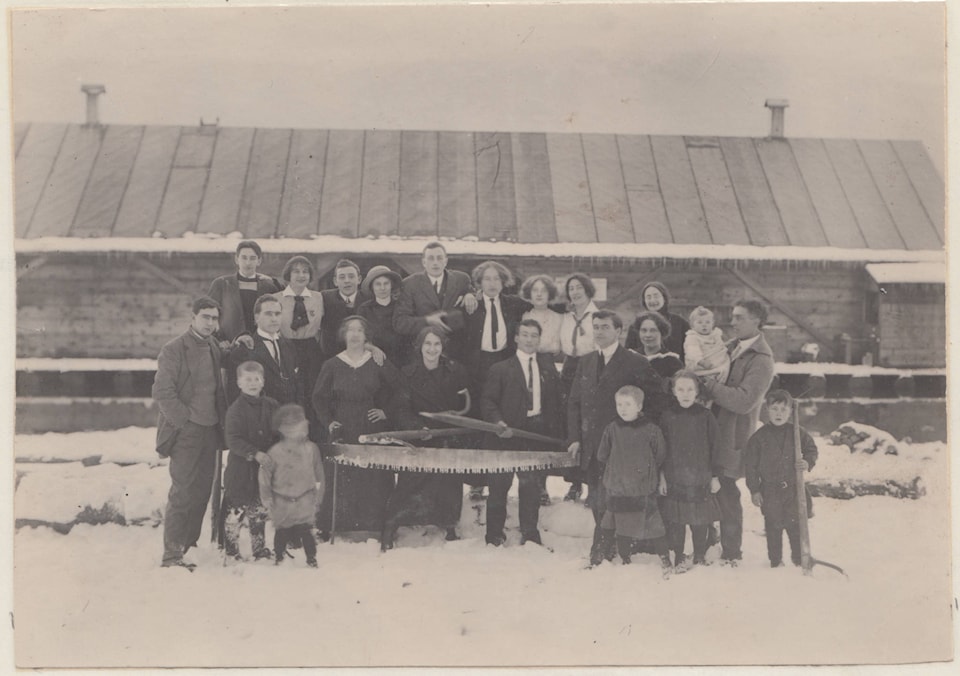ANGUS SCHROFF
Special to the Arrow Lakes News
So far in our little column we’ve been dealing in stories of pure fact, or at least as close as we can get with research. Histories of railways and industries, events witnessed by whole towns or families, things that can be nailed down beyond a reasonable doubt. But that, of course, is only one side of history. Just on the other side of the verified lies the hearsay, the stories men tell of what they saw when nobody else was around. Tall tales, and short ones, too. Even truth may stretch with time, as memories grow fuzzy and retellings add a little garnish each go-round. Such stories may not be the kind you can use in a report, but they’re just as much a part of our local history, and give some personal colour to a past that can seem so distant and monochrome.
One such story is told in the pages of the Nakusp Women’s Institute Anthology by Charles (Sid) Leary, and transcribed by one of his daughters, Sydney. Mr. Leary’s life could likely fill a paper all its own, but a writer can’t just give everything away at once. So we’ll stick to just this one, and if you wish to read more, remember our little library section is open to anyone, and so are the archives. This tale isn’t too hard to believe, but it’s certainly a close shave!
Sid’s story begins in Burton. He’d decided to check out a stand of timber and visit a friend, Bob Fauld, at the same time. Bob trapped up by Macdonald Creek, and kept a cabin there. With whiskey, a gun, a package of dates and Bob’s mail, Sid set off. He reached Bob’s cabin by dusk, sharing a meal of black coffee and black beans — something I must note sounds like a heck of a laxative — while Bob cured some pelts. The two talked a while before retiring to bed, and Bob warned Sid that he’d seen fresh grizzly tracks in the area and to bring his gun if he went out the next morning.
Sid heeded the advice in the morning, setting off for a walk in the woods with Bob already gone to check his trap lines. After about two or three hours he stopped to rest atop an old fallen log, and happened to catch some movement in the underbrush; it was the grizzly. Slowly as he possibly could, Sid raised his rifle and took a shot. The bear disappeared, and Sid sat for a good quarter of an hour waiting to see if he’d really drove the bear off. With no sound and no movement, he perhaps thought he’d killed it, and began to move towards the bushes where he’d last seen it. Halfway there he thought better of it, and turned to head back to Bob’s cabin.
It was instinct that drove Sid to look back — the same instinct that’s saved many an experienced woodsman. The feeling that something just wasn’t right — and it wasn’t. The bear was up now, and in a rage! Bounding towards him, fur covered in blood, it would be upon him in moments. He had no time to aim, only to run, and so he did. He bolted, with the bear hot on his heels. Somehow he managed to keep ahead of it enough to desperately jump and catch a tree branch, barely avoiding a swipe of the bear’s paw. He had to climb higher to get out of reach, and he grabbed another branch, pulling himself up with all his might. With a snap, the branch gave way, sending him tumbling down at the bear’s feet!
His life was saved by old Bob, who had returned to find nobody at the house — and no note from Sid. The trapper headed out into the evening with a candle set in a lard pail for light — a “bug” — and following Sid’s tracks, came upon him lying unmoving in the snow. Next to him was the bear, dead as a doornail.
Thankfully, Bob managed to revive Sid and the two figured out that the bear had been dealt a serious wound by Sid’s shot, and had died in its last effort to kill its human foe. In the end, man triumphed over beast — though not without incredible luck. Sid finishes his story with this;
“You may think that there are no such things as miracles but I defy anyone whose life was so endangered, to think otherwise.”
